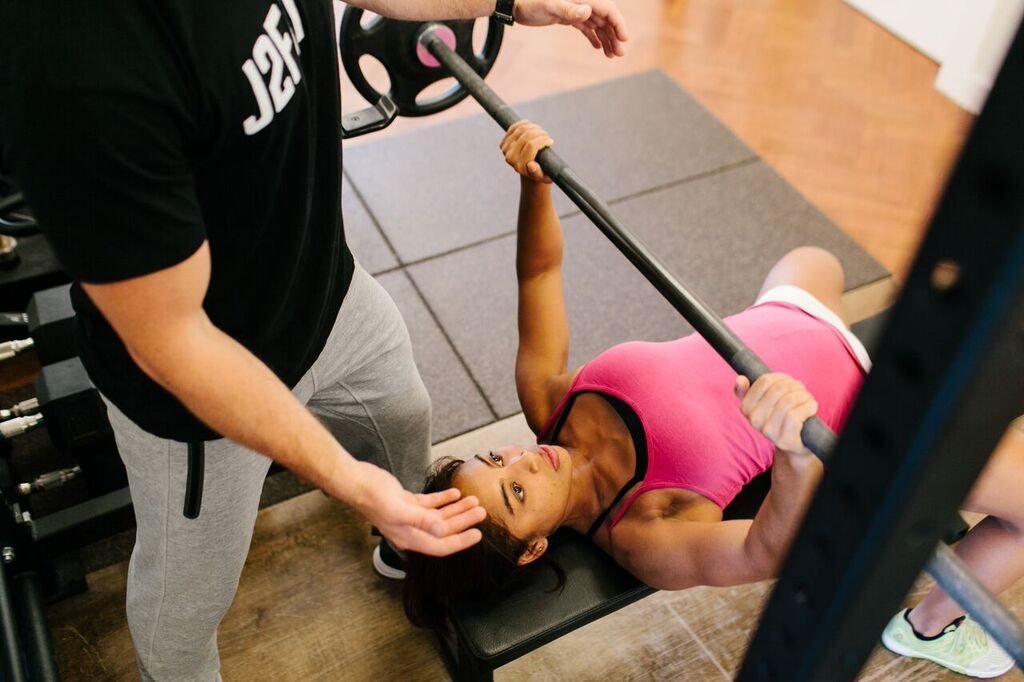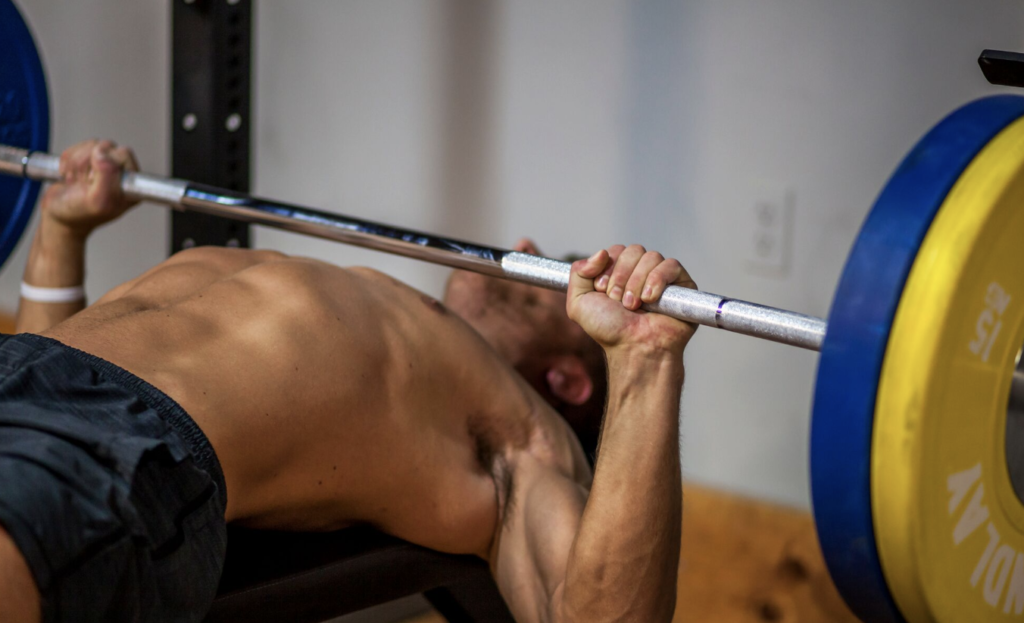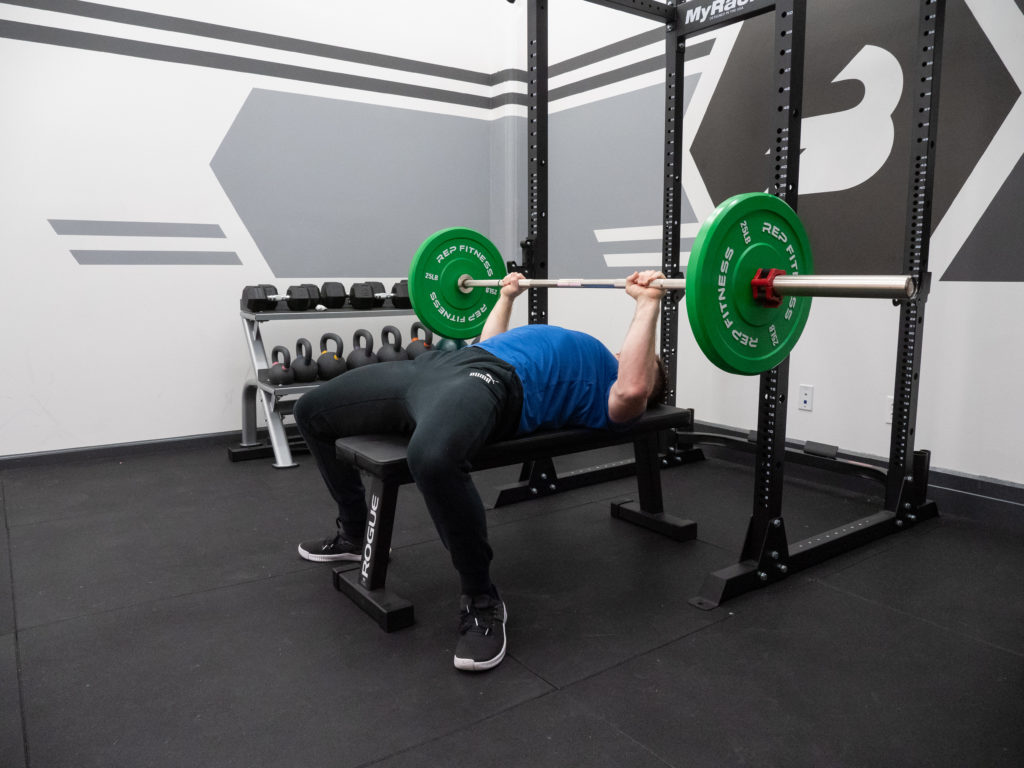The bench press is arguably the most technical lift of the big three in powerlifting. Granted, everyone has their best and worst lift, so this argument could vary from athlete to athlete, yet there’s still no denying the technical efficiency needed to perform a perfect bench press. There are multiple factors that need to align to create a powerful press from the initial descent to lockout.
Potentially the biggest dictator of success on the bench comes down to how we cue ourselves throughout the movement and press in a way that complements the body’s structure. If you’re a powerlifter, then the goal is to press the most weight possible, and if you’re a recreational lifter, then the goal is often to stay healthy, move heavy weight, and to look great doing it. There are a ton of cues you can use on the bench press, but which cues should you use, and which are best?
Chances are, as you progress through your lifting career, your cues will change and grow just like your body will. As we learn our way around the barbell, we also learn what methods work best for us. Below, we’ve broken the bench press into three sections with common and not so common cues used with each.
As discussed in our squat and deadlift cueing articles, there are a ton of cues used in lifting and sometimes they will work for you, and sometimes they will not — cues are always individual. This is why experimenting with different cues to find which ones make the most sense and work best with you is so important.
Bench Press Cues

Unrack and Setup
If you ask any elite powerlifter or coach what the most important piece of the bench press is, many will probably tell you it’s the setup and unracking of the barbell. These two factors can make or break a strong bench press and they’re virtually synonymous with one another. Think about your unrack and setup as the foundation of a well-built house. Without these two characteristics working in unison and being dialed in, your press has nothing to stand on, or press off of for that matter.
The thing is, it takes time to perfect these two elements, and without careful attention they can easily fall off the radar. This is especially true for newer lifters who may not see the benefit of spending time focusing on their setup and unrack. After all, both of these are pretty easy to perform and often don’t impact pressing right away, so why spend time overanalyzing them, but that logic is flawed.
There are a ton of benefits that come along with perfecting these two aspects for both beginners and veterans. For beginners, these two can support longevity (in respects to overuse injuries with the shoulders), consistent form, and stronger presses as you grow and develop. Veterans can improve on an already strong press, and will experience carryover into competition and maximal attempts. Before diving into the cues, it’s first important to understand points of contact on the bench press.
Bench Press Points of Contact
Whether you’re competing in powerlifting or training the bench press recreationally, it’s important to understand points of contact that you should try to create. These are points of the body that should ideally remain in contact with the bench throughout the entire movement. If you compete, then check your federation’s rules on what points are needed for a “good lift”, as they can vary slightly between federations.
- Feet on the ground (USAPL requires flat feet, other federations just require contact)
- Butt on the bench
- Upper back on the bench
- Head in contact on the bench (USAPL requires contact throughout the full press)
- Hands on the barbell
Once you understand what points of contact should be considered and are important for your bench press, you can begin to breakdown cues for the setup and unrack. Below are some traditional and non-traditional cues that come along with the setup and unrack.
Bench Press Setup and Unrack Traditional and Non-Traditional Cues
The Feet and Glutes
- Ground the feet, and screw them into the floor.
- Pull the feet in towards the glutes.
- Squeeze the glutes before the unrack at the top of the press.
- Drive the heels into the ground.
- Bring the feet behind the knees.
Upper Body Positioning
- Pull the shoulders back and bring the scaps down.
- Create a “shelf” with the upper back.
- Think of putting the scaps into your back pockets.
- Grip and think “pull the bar apart” before the unrack.
- Squeeze the shoulder blades together.
Grip and Unrack
- Pull the bar to the end of the j-hooks (closest side to you).
- Set bar height at a near lockout position.
- Eyes under or slightly behind the bar.
If you noticed, the setup and unrack cues above all have one thing in common, and that’s creating a strong, tight position to press from. Each cue will help facilitate a strong position by initiating the contraction the lats, depression of the scapulas, and creating tightness in the upper back, whilst maintaining a glute contraction and a strong foot position. In addition, it’s never a bad idea to utilize a spotter to help with maintaining full body tension.
The most important takeaway from this section is to find a string of cues that are easy for you to follow every time you bench press. This string of setup and unrack cues will be pertinent to your long-term success with a strong, consistent bench press.
Bench Press Descent
Initiating the Bench Press
Once a strong setup and unrack is achieved, it’s time to initiate the eccentric portion of the press. This portion of the press is critical for success and it can easily get neglected when compared to the concentric (pressing portion). Think about the eccentric portion of the bench press like loading a spring, and without a strong loading pattern, then your press can lose power and suffer.
There are multiple ways the eccentric potion in the bench press can go wrong. In this article, we will briefly discuss two ways the eccentric can be messed up, and these tend to be more prevalent in newer lifters.
- Bouncing the bar off of the chest. The act of bouncing the bar can cause a displacement in one’s setup, along with losing valuable eccentric loading.
- Elbow flaring. When performing the eccentric, the elbows should remain in a consistent position with one’s setup and upper body (typically over the wrists at the bottom of the press). If elbows are flaring out during the eccentric, then one may find an unnecessary amount of stress being shifted to their shoulders.
A strong eccentric loading pattern will help utilize the upper body’s stretch shortening cycle to a higher degree. For example, a study from 2015 published in the Journal of Strength and Conditioning Research compared eccentric (normal bench presses) and concentric-only bench presses to failure at various intensities (1).
Researchers suggested that those who utilized a 3-second tempo in the eccentric portion of the bench press had a higher 1-RM when working at 90% of their 1-RM compared to concentric-only pressers. They suggested that focusing on a strong eccentric helped participants produce more force, which makes sense when you consider the importance of the stretch shortening cycle during maximal strength movements.
Outside of producing more force, a controlled eccentric can also ensure one is maintaining their optimal positions throughout the press, and training the movement fully. When it comes to cueing the eccentric portion of the bench press, there are multiple cues lifters can use and try.
Bench Press Descent Traditional and Non-Traditional Cues
- Pull the bar apart.
- Bend the bar.
- Pull the bar down to you (think lat pulldown).
- Stack the wrists over the elbows.
- Pull the elbows in.
- Make contact with the bottom of the pec/sternum.
Elbow, grip, and wrist positioning will all be incredibly important during the eccentric portion of the press, and there’s not really a one-size-fits-all solution for these characteristics. Generally, the bar will sit in the meat of the hands, and the wrist will be positioned over the elbow at the bottom of the press. This position tends to be the most universal when it comes to optimizing force production and keeping one’s bench press position consistent, but again, this may vary slightly.
A useful tool for figuring out positioning in the eccentric portion of the bench is to film the press from the side and at a 45 degree angle between the feet and elbow. This can help highlight where the elbows are tracking and where the bar is landing on the chest, which can both be physical indicators in a faulty eccentric movement pattern.
The Press
The Final Press and Lockout
The final portion of the bench is the press/lockout, or the concentric contraction. This portion of the bench press is potentially the most self-explanatory of the three areas discussed in this article. A strong concentric can be the difference between three white lights and a missed lift, or even simply being able to connect strong reps together.
Similar to the eccentric part of the bench press, the concentric portion can go wrong in a couple different ways.
- Elbow flaring. Like the eccentric, if the elbows flare during the concentric portion, then the upper body’s position and power can become compromised due to poor displacement of force production.
- Over Protraction. This problem tends to be common with newer lifters. When completing a bench press, if you find yourself losing upper body tightness at the peak of the press, then you may be over protracting. This is the act of pressing to a point where the shoulder go into internal rotation and your packed scaps/lats become compromised.
In respects to cueing the concentric, or the press, there are few cues that tend to work really well. Keep in mind, these cues will only work to their best ability once you’ve dialed in your setup and eccentric.
- Press yourself away from the bar.
- Push the body down into the bench.
- Squeeze the elbows together.
- Bring the pecs together.
- Press out and ground the back.
A useful way to think about the concentric is to pretend you are trapped between the ground and a large rock. To get out, you need to press the rock off, and by doing so, you’ll have to press yourself into the ground to produce more force.
A great way to check if you’re doing this properly is to watch your bar path and the finishing position of your press. If you notice no movement in the upper body on the bench and bar is back in the position it started, then there’s a good chance you’re pressing properly.
Wrapping Up
Hopefully this article helped provide you with some ideas about the cues you’re currently using — or not using — in the bench press. The bench press can be an incredibly technical lift and form can take quite a long time to get just right. If you’re in the process of building a better bench press, then start by analyzing your setup, then work your way up through the press.
At the end of the day, what’s most important is finding a pressing style that works best for your leverages, training goals, and longevity in the gym. If you have useful cues you use that weren’t listed — share them in the comments below!
Editor’s note: This article is an op-ed. The views expressed herein and in the video are the author’s and don’t necessarily reflect the views of BarBend. Claims, assertions, opinions, and quotes have been sourced exclusively by the author.
References
1. Kelly SB, e. (2019). Comparison of concentric and eccentric bench press repetitions to failure. – PubMed – NCBI . Ncbi.nlm.nih.gov. Retrieved 22 February 2019, from https://www.ncbi.nlm.nih.gov/pubmed/25268291

